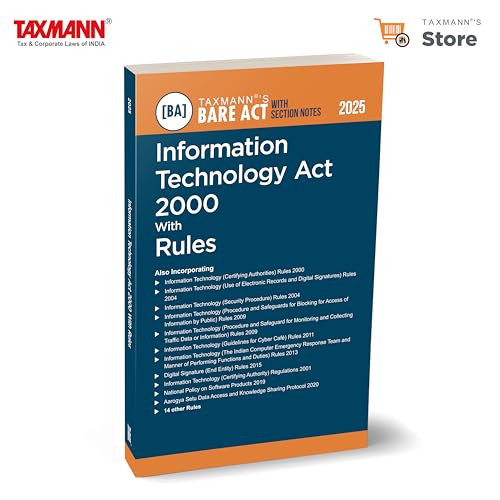
Introduction
Administrative accountability forms the cornerstone of effective governance in any democratic nation, ensuring that public officials remain answerable for their actions and decisions. In Bharat, a country with a vast bureaucratic apparatus, this concept is vital to prevent abuse of power, foster transparency, and build public trust. It involves mechanisms that hold administrators responsible to the legislature, judiciary, executive, and ultimately the citizens.[1] With Bharat’s administrative system rooted in its colonial legacy yet evolved through post-independence reforms, accountability has been reinforced through constitutional provisions, legislative enactments, and institutional frameworks.[2] This article explores the essence of administrative accountability, its significance, key legal instruments in force, supporting institutions, and persistent challenges, highlighting how these elements contribute to good governance in the world’s largest democracy.
Understanding Administrative Accountability
Administrative accountability refers to the obligation of government officials and employees to explain and justify their decisions, actions, and performance while exercising public duties.[3] It encompasses a range of processes, including reporting, audits, evaluations, and sanctions for misconduct, ensuring that public servants operate within the bounds of law and ethics. In the Bharatiya context, this accountability is multi-dimensional, drawing from the Weberian model of bureaucracy that emphasizes hierarchy, rules, and documentation. Administrators are expected to be responsive not only to hierarchical superiors but also to external stakeholders, promoting integrity and efficiency. This framework helps in curbing arbitrary actions and aligning administrative functions with democratic values, where public officials must demonstrate responsible use of authority and resources.[4]
Importance of Administrative Accountability in Governance
In a diverse and populous nation like Bharat, administrative accountability is indispensable for upholding good governance and citizen welfare. It acts as a safeguard against corruption, inefficiency, and misuse of power, which can otherwise erode public confidence in institutions. By mandating transparency, it empowers citizens to scrutinize government operations, leading to better policy implementation and resource allocation. For instance, accountable administration ensures that welfare schemes reach intended beneficiaries without leakages, fostering social equity.[5] Moreover, in an era of rapid digital transformation, accountability mechanisms help integrate technology for efficient service delivery, reducing bureaucratic red tape. Ultimately, it strengthens democracy by making the executive branch answerable, preventing authoritarian tendencies and promoting ethical conduct among public servants, which is crucial for sustainable development and public trust.
Constitutional Provisions for Accountability
The Constitution of India lays a robust foundation for administrative accountability through several articles that regulate civil services and ensure protection against arbitrary actions. Articles 308 to 313 under Part XIV address services under the Union and States, empowering Parliament and state legislatures to regulate recruitment and service conditions via Article 309. Article 310 incorporates the doctrine of pleasure, allowing the President or Governor to terminate services, but this is balanced by Article 311, which safeguards civil servants from dismissal or reduction in rank without a proper inquiry and opportunity to defend, adhering to natural justice principles.[6] Additionally, Article 350 enables citizens to submit representations for grievance redressal, enhancing direct accountability. Article 148 establishes the Comptroller and Auditor General (CAG), an independent body responsible for auditing government expenditures and receipts, with reports aiding legislative oversight through committees like the Public Accounts Committee. These provisions collectively ensure that administrators remain accountable while protecting them from undue political interference, forming the bedrock of Bharat’s accountability framework.
Key Laws and Acts Governing Administrative Accountability
Several laws in force reinforce administrative accountability in Bharat, providing legal tools for transparency, anti-corruption measures, and citizen engagement. The Right to Information Act, 2005, is a landmark legislation that mandates public authorities to disclose information proactively and respond to citizen queries within stipulated timelines, deterring malpractices by exposing corruption and inefficiencies. It has led to numerous prosecutions and systemic improvements, empowering citizens as active participants in governance. The Prevention of Corruption Act, 1988 (amended in 2018), criminalizes bribery, misappropriation, and misconduct by public servants, prescribing stringent punishments to curb graft. The Lokpal and Lokayuktas Act, 2013, establishes anti-corruption ombudsmen at central and state levels to investigate allegations against high officials, including the Prime Minister, with powers for inquiry, prosecution, and asset confiscation. Other supportive laws include the Commissions of Inquiry Act, 1952, for probing public matters, and initiatives like the Central Civil Services (Conduct) Rules, 1964, which outline ethical standards for civil servants. Additionally, e-Governance under the National e-Governance Plan promotes digital transparency, while social audits in schemes like MGNREGA ensure grassroots accountability. These laws collectively create a comprehensive legal ecosystem to hold administrators responsible.
Institutional Mechanisms
Bharat’s administrative accountability is bolstered by dedicated institutions that monitor, investigate, and enforce compliance. The Central Vigilance Commission (CVC), established in 1964 and granted statutory status in 2003, serves as the apex anti-corruption body, overseeing vigilance in central government departments, conducting inquiries, and advising on preventive measures. It sanctioned prosecutions against numerous officers in recent years, demonstrating its role in maintaining integrity. The Central Bureau of Investigation (CBI), under the Delhi Special Police Establishment Act, 1946, probes corruption cases, often in coordination with the CVC. At the state level, Lokayuktas function as ombudsmen to address grievances against administrative actions. Other mechanisms include Citizen’s Charters for service standards, Public Financial Management Systems (PFMS) for transparent fund tracking, Direct Benefit Transfers (DBT) to minimize leakages, and Management Information Systems (MIS) for real-time monitoring. Grievance redressal portals and social audits further enhance citizen involvement, ensuring multi-layered oversight and responsiveness in administration.
Challenges in Ensuring Administrative Accountability
Despite a strong framework, administrative accountability in Bharat faces significant hurdles that undermine its effectiveness. Political interference often hampers institutions like the CVC and CBI, with appointments lacking transparency and leading to controversies, as seen in past Supreme Court interventions. Implementation gaps in laws such as the RTI Act include misuse for harassment, fear of victimization among officials, and exemptions that limit access to crucial information. The first Lokpal appointed only in 2019.[7] Thus the Lokpal Act’s delayed rollout, highlights bureaucratic inertia and political reluctance. Corruption persists due to weak punishments under the Prevention of Corruption Act and procedural delays in inquiries. Moreover, low public awareness, inadequate digital infrastructure in rural areas, and resistance to social audits pose barriers to grassroots accountability. These challenges necessitate reforms like strengthening institutional autonomy, enhancing whistleblower protections, and leveraging technology to bridge gaps, ensuring accountability translates into tangible governance improvements.
Conclusion
Administrative accountability in Bharat is a dynamic interplay of constitutional safeguards, legal instruments, and institutional mechanisms designed to foster transparent and responsible governance. While laws like the RTI Act and Lokpal Act, along with bodies such as the CVC and CBI, have made strides in combating corruption and empowering citizens, ongoing challenges demand continuous reforms. Strengthening these elements will not only enhance public trust but also align administration with Bhrat’s democratic ethos, paving the way for efficient and equitable development. As the nation progresses, prioritizing accountability remains key to realizing the vision of a corruption-free and citizen-centric bureaucracy.
[1] “Enhancing Government Effectiveness and Transparency The Fight Against Corruption”, World Bank Group, Global Report, September, 2020
[2] “Ethics in Governance”, Second Administrative Reforms Commission, Fourth Report, January 2007
[3] “Administrative Accountability in India: Mechanisms and Institutions”, Tarun IAS, Dt. 18 January 2025, available at https://tarunias.com/exams/upsc-notes/administrative-accountability-in-india/, last visited on 25.08.2025
[4] “Accountability and Control”, IIPA Publications, available at https://www.iipa.org.in/GyanKOSH/posts/accountability-and-control, last visited on 25.08.2025
[5] “India’s DBT: Boosting Welfare Efficiency”, PIB India, Dt. 21.4.2025, available at https://www.pib.gov.in/PressReleasePage.aspx?PRID=2123192#:~:text=The%20reduction%20in%20subsidy%20burden,proportional%20increases%20in%20the%20budget.&text=A%20detailed%20breakdown%20of%20sector,18%2C699.8%20crore%20through%20targeted%20disbursement., last visited on 25.08.2025
[6] State Of Gujarat & Ors vs Raman Lal Keshav Lal & Ors [(1980) 4 SCC 653]
[7] “Justice P.C. Ghose appointed first Lokpal”, The Hindu, Dt. 19.03.2019, available at https://www.thehindu.com/news/national/justice-pc-ghose-appointed-first-lokpal/article26582874.ece, last visited on 25.08.2025




Pingback: Administrative Finality: Ensuring Closure in Governance – bharatlex-rinkutai.com